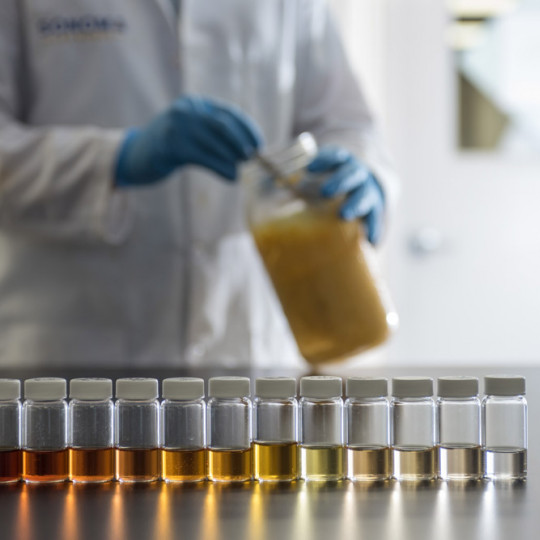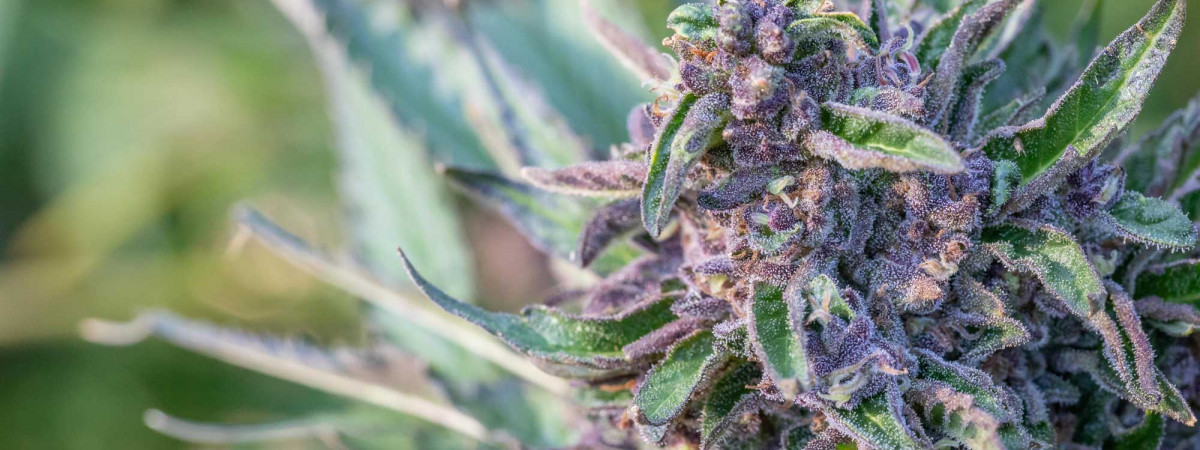
Have you ever opened a jar of cannabis and had the smell of sweet skunk slap you in the face? Or maybe you’ve hit a joint in the wild and tasted blueberries with a little hint of gas? If you’ve answered “yes” to either of these questions, then you can thank cannabis terpenes for the experience. As the industry evolves, terpenes are becoming a louder part of the discussion around cannabis and why you feel the way you do after consuming certain varieties.
What are terpenes and what do they do?
Terpenes are the aromatic oils within cannabis trichomes that produce a plant’s aroma, flavor, and in the case of cannabis, help influence the consumption experience. Terpenes exist in most plants. Past smell and taste, cannabis terpenes also help ward off herbivores. That beautiful skunky fragrance and sticky resin feel we all love is the main reason you can grow huge fields of cannabis without a pack of deer treating it like an all-you-can-eat buffet. (Pests like mites, mold, and mildew are a different story.)
How do cannabis terpenes influence effects?
Due to the federal illegality of cannabis, there is still much research left to do. Research scientists, and the industry are still in no place to make any concrete claims on the relationship between terpenes and effects. Research, like this 2011 study by Ethan B. Russo, suggests that the terpenes in each cannabis plant help influence the types of highs we feel after consuming cannabis. However, there is still very little clinical research for us to truly make any claims on how terpenes contribute to effects. A 2017 article published by Judith K.Booth and Jörg Bohlmann suggests that there truly is not enough research to solidify these claims. In a May 2020 episode of the Cannabis Conversation podcast, Russo doubles down.
The truth is we do not know, yet the growing belief within the cannabis industry is that those uplifting or sedative effects you may feel from Tangie or Blackberry Kush aren’t solely because Tangie is a Sativa and Blackberry Kush is an Indica; and more about a combination of the strains’ cannabinoids (THC, CBD, CBN, etc.) and terpenes known as the entourage effect.
(Read more about the myths surrounding Sativa and Indica over at The Farmer and the Felon)
What is the entourage effect?
If you think of the entourage effect in food terms, cannabinoids and terpenes are essentially a cannabis strain’s ingredients. Now think of it in terms of chicken soup. All your life you’ve been told if you’re sick, chicken soup will have uplifting, feel-good, soothing effects. But if you walk into a grocery store looking for chicken soup, you’re not just going to grab any ol’ can in the chicken soup section and expect Campbell’s, Progresso, and Pacific Organic to all taste and feel the same. A shelf can’t predict effects. Instead, you’re going to look at the picture on the front of the can, and/or the ingredients on the back of the can, then make your purchase based on what exactly is in the soup. Cannabis is soup; chicken soup is the sativa/indica classification; the noodles, broth, peas, carrots, etc. are the soup cannabinoids and terpenes that contribute to however you feel after eating the soup.
How many cannabis terpenes are there?
According to Analytical Cannabis and PotGuide, there are currently 20,000 known terpenes amongst plants, and cannabis has at least 100 of them. Of the 100 cannabis terpenes, Leafly lists eight as the most common: myrcene, beta-caryophyllene, limonene, pinene, terpinolene, linalool, humulene, and ocimene. Many of the things we believe about these terpenes remains unconfirmed by adequate scientific research.
The most common cannabis terpenes
Myrcene
Myrcene is the most abundant terpene amongst all cannabis strains. It is believed to be the terpene that makes plants indicas, and also responsible for some of the properties associated with cannabis indica plants. Myrcene is also found in mangoes and hops. It is said to have a musky and herbal scent. The strains Blue Dream and White Widow contain heavy amounts of myrcene.

Beta-caryophyllene
Beta-caryophyllene, or simply caryophyllene, is the second most common terpene in cannabis. It is found in black pepper, cloves, and cinnamon. OG Kush and Original Glue are commonly dominant in beta-caryophyllene.

Limonene
Limonene is thought to be the terpene responsible for the citrus flavors of cannabis, and the uplifting/euphoric effects associated with cannabis sativa strains. It is also found in orange and lemon rinds, juniper, and peppermint. Two common cannabis strains with an abundance of limonene are Cinex and Wedding Cake.

Pinene
Pinene is said to smell like taking a deep breath in an evergreen forest. The terpene is also common in pine needles, rosemary, and basil. Strains that commonly contain higher amounts of pinene include Big Smooth, Snoop’s Dream, and Harlequin.

Terpinolene
Terpinolene is another terpene prevalent across a wide range of cannabis strains, like Jack Herer and everything that comes from it (Super Jack, XJ-13). It is thought to have somewhat uplifting properties, but this terpene has been studied a lot less than the above four. Terpinolene is also common in tea trees, oregano, and cumin.

Linalool
Linalool is a plant terpene commonly found in lavender, and a lot less commonly found in cannabis.

Ocimene
There is little known about ocimene, a plant terpene also found in mint and parsley, and its connection with beneficial cannabis effects. It is thought to have an herbal fragrance.

Humulene
Hulumene is a plant terpene found in cannabis, hops, and wood. Much like linalool and ocimene, little is known about the connection between humulene and its potential benefits, as it is found in cannabis way less abundantly than myrcene, beta-caryophyllene, limonene, pinene, and terpinolene.

Experience the aromas, flavors, experience of terpenes with our ABX Live, and Loud+Clear vape cartridges and concentrates. Click here to order AbsoluteXtracts for delivery or pickup at your favorite dispensary.
